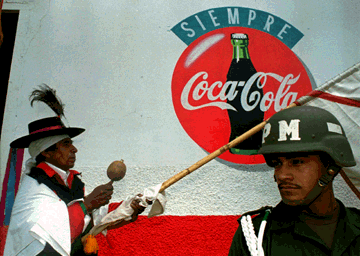Jan
26
The various faces of popular culture
Posted by: Brian | January 26, 2009 | Comments Off on The various faces of popular culture
After reading the text, we could define popular culture in Latin America as a mix between the rural and the urban culture. Popular culture is both traditional art but also what Rowe and Schelling call the “culture industry”. Peasants who immigrated in cities have imported their handicraft which has been mixed then with the urban mass-media culture. However, it’s worth noticing that even traditional culture is a kind of mixture; for instance, the Indians also import their own music instruments so there is a mix between modernity and tradition. But the problem is when traditional art is decontextualized and turned into a timeless piece of art, “object of aesthetic appreciation”. All this folklore is removed from the historical and social contexts. The authors speak about “folklorization, standardization in conformity with Western tonality and internationalization”.
I would like to focus on the terms “folklorization” and “standardization”. Folklore refers to what is produced by the people: song, ceremonies… and folklorization implies that some people choose what they want to be folklore in a particular culture. What the authors mean by folklorization and standardization is that popular culture in Latin America is always modified in order to fit to the Western standards. Indigenous art is standardized to fit to what the Westerners think it should be so it is no longer art in sense of a true creation. Handicraft is produced to be consumed so the traditional culture does no longer have any sense. Urbanization and the development of the market create a standardized art.
However, Rowe and Schelling show that a traditional rural society could survive by mixing rural and urban culture which means that modernization and urbanization didn’t destroy traditional culture but just changed it. Urbanization created a new kind of popular culture. Most of the peasants who settle in town become very poor and are the main consumers of the culture industry promoted by the communication technologies like the TV or the radio. Football is another aspect of popular culture in Latin America. At the beginning football grounds have been constructing by authorities and factory owners to calm down the strikes led against the expulsion of the poor from the city centre so all these examples show that urbanization provoked a lot of cultural shifts and disruptions. Popular culture has various faces: a traditional, rural, urban and modern one. Culture is not fixed but changing and adapts itself to the society changes. Popular culture is made by the people and evolves with them.
